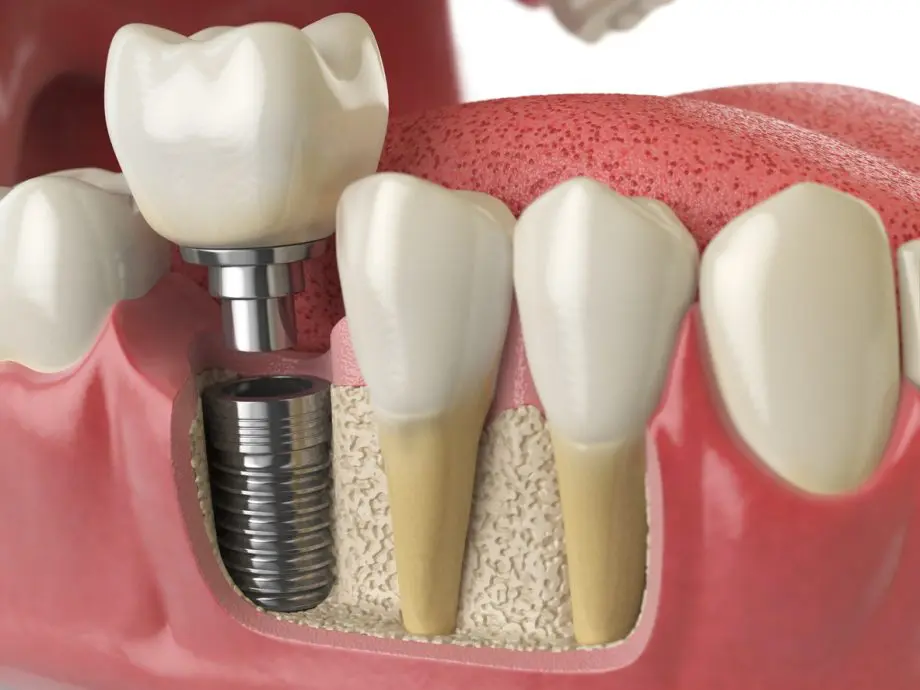Dental Implants Sunbury OH Your Local Guide to Dental Implants
Dental Implants Sunbury OH Your Local Guide to Dental Implants
Blog Article
Dental Care Granville OH Types of Dental Implants
Dental implants have revolutionized restorative dentistry, offering a dependable alternative to conventional strategies for replacing missing teeth. The integration of dental implants with the jawbone is a complex biological course of known as osseointegration. This process not only anchors the company website implant securely but also helps keep jawbone health, stopping next the bone loss pop over here typically related to missing teeth.
The dental implant itself is usually made from titanium, a biocompatible material that the body accepts. When an implant is placed in the jaw, it's designed to carefully mimic the root of a natural tooth, which is essential for effective integration. The titanium surface encourages the growth of bone cells, enabling the jawbone to bond with the implant over time.
Dental Care Associate Columbus OH Dental Implants Cost Breakdown: What You Need to Know

Several phases constitute the osseointegration process. Initially, when the implant is surgically placed into the jaw, a healing period is required for the encircling bone to begin reworking. During this time, the bone grows across the implant, making a stable and steady basis. This therapeutic time can range, usually lasting several weeks to some months, depending on various factors, including the person's total health and the particular location of the implant.
The function of surrounding bone quality is essential. High-density bone sometimes provides a greater surroundings for osseointegration compared to lower-density bone. Specialists typically evaluate the standard and amount of bone before the implant placement to find out the most effective plan of action, which may contain bone grafting procedures in instances of insufficient bone quantity. Grafting enhances the probabilities of successful integration by making a more sturdy base for the implant.
The biological mechanisms behind osseointegration involve varied mobile actions. Osteoblasts, the cells responsible for bone formation, migrate to the implanted space and begin to lay down new bone materials. Simultaneously, the surface of the titanium implant undergoes adjustments that facilitate this bonding process. Some newer implant designs incorporate floor modifications to additional improve biological integration.
Mono Implants Hartford OH Dental Implant Surgery
Throughout the integration process, the position of blood provide cannot be overstated. An enough blood supply nourishes the bone and ensures the correct functioning of the cells concerned in the healing and integration process. Improved blood flow leads to quicker therapeutic and better outcomes, which is why surgical techniques and aftercare typically prioritize sustaining or enhancing blood circulation to the positioning of the implant.
Improvements in surgical strategies additionally contribute significantly to the success rates of dental implants - Dental Care Associate Columbus OH. Minimally invasive methods and guided implant surgery allow for more precise placement of implants, reducing trauma to the surrounding tissues and doubtlessly dashing up the therapeutic time. The less trauma skilled by the jawbone can lead to a more favorable environment for osseointegration
Dental Care Pataskala OH What Are Dental Implants? Types, Benefits, and More

How a person maintains their oral hygiene after receiving an implant can significantly influence integration success. Proper care across the implant web site helps prevent infections, which may disrupt the healing course of. Regular dental check-ups are also vital to watch the health of both the implant and the encircling gum and bone tissues.
Long-term success with dental implants is commonly linked to elements such as life-style choices. Patients who smoke or have uncontrolled diabetes could experience lower charges of osseointegration. These conditions intervene with therapeutic and blood supply, making it critical for people considering implants to debate their health history with their dentist.
After the profitable integration of the implant, the subsequent phase involves inserting the prosthetic restoration, similar to a crown. The ultimate restoration must match comfortably and functionally integrate with the present dentition. Dentists Condit OH. Proper alignment and occlusion play important roles in how well the implant will carry out over time
Dental Center Pataskala OH Dental Implant Recovery
Dental implants current an enduring resolution that helps protect the integrity of the jawbone. When a tooth is lost, the bone that once anchored its root begins to deteriorate. Implants stimulate the bone equally to natural teeth, triggering the jaw to maintain its density and strength. This stimulation is crucial for preventing the sunken facial appearance that often accompanies tooth loss.
In conclusion, the mixing of dental implants with the jawbone includes a posh interaction of organic and mechanical factors. Understanding the osseointegration process can empower individuals to make informed decisions about their dental health. By appreciating the importance of choosing a skilled dental professional and adhering to post-operative care, patients can achieve optimal outcomes and enjoy restored function and aesthetics for many years to come.

- Dental implants mimic the structure of natural teeth and provide a secure foundation by integrating with the jawbone by way of a process called osseointegration.
- The biocompatibility of titanium, commonly used for dental implants, plays a crucial role in selling profitable bonding with bone tissue.
- Osseointegration usually begins inside a few weeks post-surgery, with the implant floor progressively turning into enveloped by bone cells.
- The mechanical stability of implants is enhanced by their surface roughness, which encourages bone growth and improves the integration process.
- Immediate loading of implants may be possible in sure instances, depending on bone density and the patient’s overall dental health.
- Over time, the jawbone responds to the presence of an implant by present process reworking, contributing to the long-term success of the process.
- Factors similar to oral hygiene, smoking habits, and systemic health conditions can significantly impression the combination means of dental implants.
- Regular follow-ups and imaging techniques, such as X-rays, may help monitor the success of osseointegration and detect potential issues early.
- The preservation of surrounding bone structure is enhanced by the stimulation offered by dental implants, which can help prevent bone loss in adjacent areas.
- Successful integration not solely restores performance to the tooth but in addition contributes significantly to the aesthetics of the affected person's smile and facial structure.undefinedWhat are dental implants and the way do they work with the jawbone?undefinedDental implants are titanium posts surgically inserted into the jawbone to serve as synthetic tooth roots. Once positioned, they undergo a course of referred to as osseointegration, where the jawbone naturally fuses with the implant, making a secure foundation for the replacement tooth.
How does osseointegration occur?undefinedOsseointegration is a organic process the place bone cells grow and attach to the floor of the dental implant. This typically takes a quantity of months, throughout which the implant becomes firmly anchored within the jawbone, making certain strength and stability for the bogus tooth.
Dentists Centerburg OH Common Dental Implant Problems and How to Avoid Them
What factors influence the success of dental implant integration?undefinedKey elements embrace the standard and amount of the jawbone, the patient's overall health, and oral hygiene practices. Adequate bone density is crucial, as insufficient bone might impede profitable integration.
Is the pain throughout dental implant placement significant?undefinedMost sufferers report minimal discomfort in the course of the process, as native anesthesia is used. Post-operative pain is generally manageable with over-the-counter pain relief medications, and most discomfort subsides within a few days.
How long does the mixing process take?undefinedTypically, osseointegration takes about three to six months. However, this will differ based mostly on particular person therapeutic processes and the particular conditions of the jawbone.
Can anybody get dental implants?undefinedMost individuals are candidates for dental implants; nonetheless, sure conditions such as uncontrolled diabetes or extreme gum disease could affect eligibility. A thorough evaluation by a dental skilled is critical to determine suitability.
Dental Center New Albany OH Common Dental Implant Problems and How to Avoid Them
What could be accomplished if there is not enough jawbone for integration?undefinedIf there's insufficient bone, procedures like bone grafting may be performed to enhance the jawbone. Once the graft heals, dental implants can then be placed, permitting for successful integration.
Are there long-term care issues after getting dental implants?undefinedYes, maintaining wonderful oral hygiene is important for the longevity of dental implants. Regular dental check-ups and cleanings also assist prevent complications and make sure the ongoing health of the encircling bone and gum tissue.
Dentist Office Sunbury OH Dental Implants for Seniors: Considerations and Benefits
How do dental implants examine to different tooth replacement options?undefinedDental implants are sometimes thought-about superior to dentures and bridges as a outcome of their sturdiness, stability, and the preservation of jawbone health. Unlike different choices, implants fuse with the jawbone, which helps keep bone density and facial structure.
Report this page